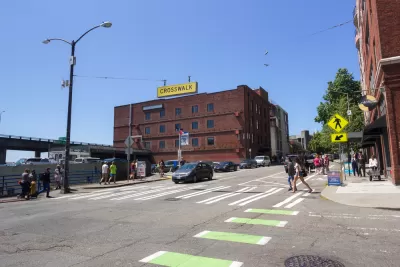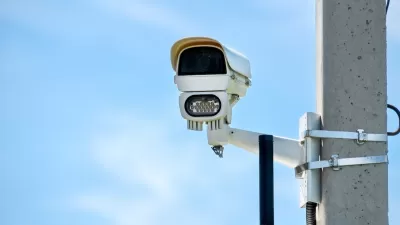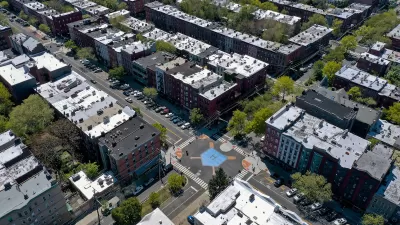Legislative efforts to reduce traffic deaths could move the needle toward Vision Zero, but state leaders failed to commit infrastructure funds to making structural improvements.

A legislative push to improve traffic safety in Washington state is focusing on enforcement and education, largely ignoring the impacts of road design and infrastructure on traffic deaths, writes Gregory Quetin in The Urbanist.
At a press conference held by state legislative leaders and Washington Governor Jay Inslee, “Leaders claimed that addressing behavior could turn the tide of road deaths. However, the absence of funding priority and urgency around fundamentally redesigning our streets suggests their effort will come up short.”
Quetin warns that “the emphasis on law enforcement with the attendant risk of unequal treatment based on race and socioeconomics and after a major infrastructure spending bill containing numerous road expansion projects whose underlying goal is car speed and throughput, both key aspects of road design that make them unsafe and undermines spending on safety in the bill.”
The article describes legislation currently proposed at the state level, efforts which would boost law enforcement presence, lower the blood alcohol limit, ban right turns on red, and implement other measures that could improve safety but fall short of redesigning dangerous roads.
Traffic safety advocates have criticized the Texas Department of Transportation (TxDOT) for taking a similar approach, arguing that transportation agencies should do more to eliminate dangerous road conditions that lead to deadly crashes and reduce the chance of death and serious injury when crashes do occur.
FULL STORY: State Road Safety Push Overlooks Design, Dwells on Enforcement

Alabama: Trump Terminates Settlements for Black Communities Harmed By Raw Sewage
Trump deemed the landmark civil rights agreement “illegal DEI and environmental justice policy.”

Study: Maui’s Plan to Convert Vacation Rentals to Long-Term Housing Could Cause Nearly $1 Billion Economic Loss
The plan would reduce visitor accommodation by 25% resulting in 1,900 jobs lost.

Planetizen Federal Action Tracker
A weekly monitor of how Trump’s orders and actions are impacting planners and planning in America.

Waymo Gets Permission to Map SF’s Market Street
If allowed to operate on the traffic-restricted street, Waymo’s autonomous taxis would have a leg up over ride-hailing competitors — and counter the city’s efforts to grow bike and pedestrian on the thoroughfare.

Parklet Symposium Highlights the Success of Shared Spaces
Parklets got a boost during the Covid-19 pandemic, when the concept was translated to outdoor dining programs that offered restaurants a lifeline during the shutdown.

Federal Homelessness Agency Places Entire Staff on Leave
The U.S. Interagency Council on Homelessness is the only federal agency dedicated to preventing and ending homelessness.
Urban Design for Planners 1: Software Tools
This six-course series explores essential urban design concepts using open source software and equips planners with the tools they need to participate fully in the urban design process.
Planning for Universal Design
Learn the tools for implementing Universal Design in planning regulations.
Caltrans
Smith Gee Studio
Institute for Housing and Urban Development Studies (IHS)
City of Grandview
Harvard GSD Executive Education
Toledo-Lucas County Plan Commissions
Salt Lake City
NYU Wagner Graduate School of Public Service





























